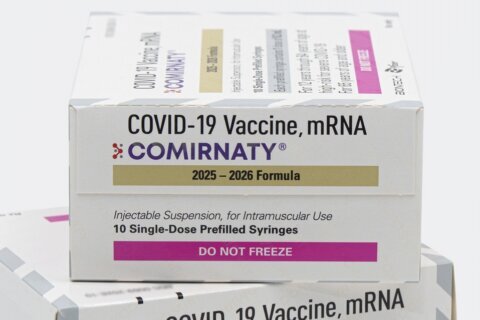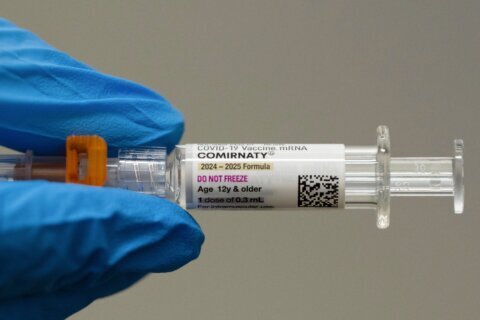Montgomery County Executive Marc Elrich said Wednesday that if the latest trends on COVID-19 hold, the county would be “likely” to enter Phase Two of the lifting of safety restrictions “sometime next week.”
Elrich made the announcement on the county government’s Facebook page Wednesday just after noon, before his weekly briefing with the county’s health officer, Dr. Travis Gayles.
“We expect to allow modified indoor retail shopping and indoor religious services, lap swimming and more,” Elrich said.
The limit on gatherings would rise from 10 to 50; restaurants would be able to have a maximum of 50 people for indoor dining.
Those and many other of the most important changes are subject to the lifting of restrictions by Gov. Larry Hogan. He’s expected to speak Wednesday at 5 p.m. on the latest recovery efforts.
“We’re anticipating that this is the direction the governor is going in,” Elrich said at the briefing.
“The date is still flexible,” Elrich said. “If we see high spikes, we won’t be able to go there.”
See the full list of differences between Phase One and Phase Two on the Montgomery County website.
Economic recovery
Elrich said the pace of economic recovery in the county could be affected by a number of factors.
While “we should see a restoration of some staff” as businesses are able to reopen, he said, “There are thousands of businesses that are probably permanently shuttered. Those are going to be hard to bring back.”
Another critical factor in the economic recovery from the pandemic comes when landlords face business tenants who couldn’t pay rent in April, May and possibly June. Writeoffs and repayment plans might be critical, Elrich said.
While some business landlords have been flexible, “I know businesses have already gotten letters that they’re going to be evicted, and ‘I expect you to pay no matter what else is happening,’” Elrich said. “And if that’s the approach that some of these landlords are going to take, it’s going to be really difficult.”
He acknowledged that many landlords are under similar pressures from their mortgage lenders and sanid “Everybody has to take some kind of hit. … There’s got to be an understanding that this needs to be worked out.” Otherwise, he added, “You’re going to end up with a lot of empty retail space, and the other side of that is much higher unemployment than needs to be.”
Elrich also said that he didn’t favor a proposal to freeze the minimum wage, but added, “I understand people’s concerns” and suspected it would be a conversation down the road.
‘Downward trend’
Asked whether any of the protests that have sprung up over the past two weeks are causing more cases, Gayles said that the county’s measurements of cases, hospitalizations and deaths are the key to lifting restrictions, no matter the cause. An uptick for any reason, he said, meant that “we would have to reevaluate where we are.” He added that increases in cases in other places haven’t necessarily been attributable to large gatherings, but “reopening too quickly.”
“We have continued to see a downward trend of new cases,” Gayles said. The county has tested 6.5% of the population, and the seven-day average is at 9.5%.
The County Council is in the process of declaring racism a public health emergency, and Gayles said that his department has issued reports to policymakers on the influence of social factors on health. He said that in regard to COVID-19, his approach would combine “more effective, robust contact tracing” in mostly minority ZIP codes with asking “What are the long-term, systemic strategies” for health equity in the COVID-19 pandemic and in the future.
Asked about lessons that have been learned during the present pandemic, Gayles said “there hasn’t been a guidebook for any of this” in terms of what agencies and residents have had to do.
For example, in the early days, all the data pointed to the notion that the virus was mostly spread through travel, not in communities. Because of that, most of the extremely limited testing equipment was earmarked for people who had recently traveled to places where the virus had been prevalent. Similarly, for a long time it wasn’t believed that people without symptoms could transmit the virus. “You’re constantly learning new information,” Gayles said.
- Sign up for WTOP alerts
- Latest coronavirus test results in DC, Maryland and Virginia
- Northam: Northern Va. to enter Phase Two on Friday; schools to reopen in fall
- Backlogged coronavirus test data could shift Virginia numbers
- Coronavirus FAQ: What you need to know
- Coronavirus resources: Get and give help in DC, Maryland and Virginia
- Should you get a coronavirus antibody test? What Fauci recommends








